

© 2004, 2005, 2006, 2007 by Man of the Cloth Productions
Remember, you are responsible for determining the safe use of all info found on the web--mine included! There are inherent risks and dangers when working with 12 volt batteries. If you don't understand it, don't do it.
The electrical system in the Zephyr relies on its own deep cycle 12 volt battery. I planned for a relatively simple electrical system for lights and a fan. I also wanted a control panel to house the DC switches and monitor the battery voltage. Resting voltage is used to determine the state of charge in the batteries. The state of resting charge is like the level of gas in a gas tank, as the following chart shows:
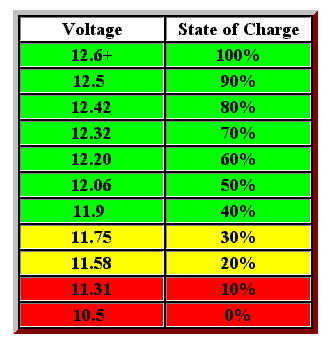
I began with a basic paper sketch showing the layout of switches and the meter that would read the state of charge (volts). From the paper sketch the next step was to buy the parts.
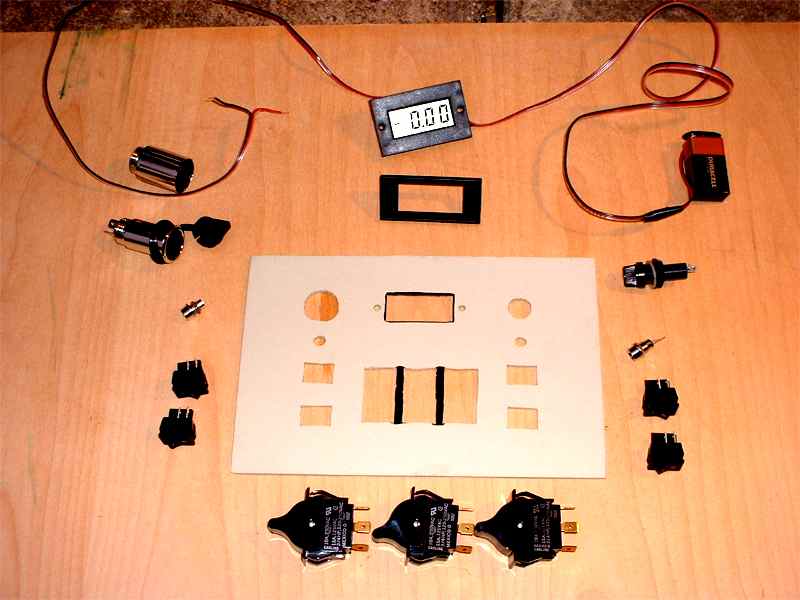
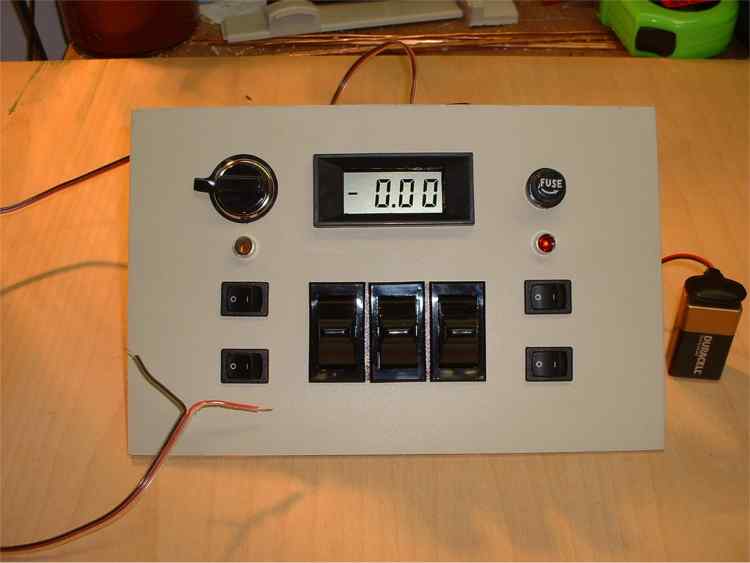
The plastic panel was fabricated from a discarded computer case.
The heart of this layout came from the great information Mark Nemeth last posted on the internet at http://www.ccis.com/home/mnemeth/12volt/12volt.htm . I also purchased a few parts from All Electronics. They have a website at www.allelectronics.com and you can download their catalog in PDF format and view it.
Read what Mark has to say about batteries and the wonderful information he has posted at "The 12 Volt Side of Life." I have not found anything better. I also want to give credit to Mark Nemeth for the basic schematic for my project. It looks like this:
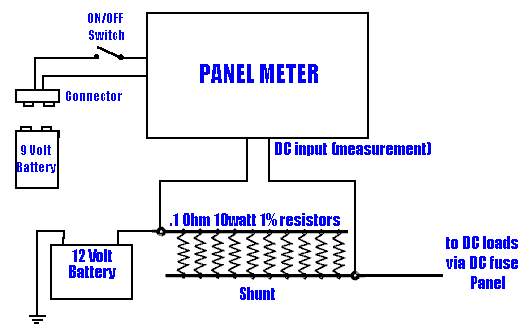
Every 12 volt DC system needs a fuse box. Every circuit needs to have a fuse that matches the load. Every circuit must be wired with the proper gauge wire. Without these precautions 12 v DC can start a fire. Under current load, thin wires can heat up, or melt. The purpose of a fuse is to protect the wire of a circuit.
I opted for bus fuses that are easily available from any auto parts store. I purchased a bus fuse integrated circuit for a few dollars from All Electronics www.allelectronics.com and found a few other components I needed at the hardware store.
The integrated circuit board went in first. Next, I installed the master “kill” switch. I can use this single switch to shut off current to all 12 volt DC circuits in an instant.
Here is a basic explanation of how I energized the fuse box and the circuits. I took the main 12 v + DC (Red) wire from the control panel source switch and energized the “kill switch,” visible in the bottom of the photo. Then I ran a wire from this switch to the metal terminal blocks on the left side of the circuit board. This energized the circuit board. The next step in the path of the circuit is through a fuse, out of the fuse box and on to a load, such as a light or fan. I used red wire for this leg of each circuit.
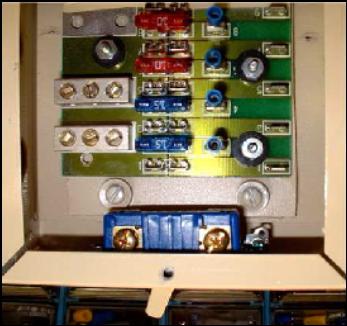
After passing through the resistance load, I used black wire to indicate the negative (return path) for each DC circuit. I returned each black wire to the black terminal bar I located in the electrical chase of the Zephyr. From the terminal bar I continued the circuit to the 12 volt - DC main control panel switch.
With this set up the Zephyr has 9 separately fused circuits. The fuse on each circuit matches the amperage load and the wire gauge of that circuit. I have a main safety "kill switch." All this is contained in a 7 x 5 x 2" aluminum box.
All electrical contacts were insulated from the metal of a fuse box. All circuits were wired with insulated wire of a gauge that matches the amperage of the circuit’s intended load. I kept the terminal connections for the positive and negative side of each circuit physically separated as an added safety feature. I also installed a separate 30 amp “blow out” or “meltdown” fuse. I located this on the 12 v + DC main, between the battery and the control panel main switch. This prevents a catastrophic flow of amperage from the battery in the event of a short circuit.
Check with mechanic who works on electrical systems or an electrician to verify the safety of this or any 12 v DC system you install in a trailer.
Comments welcome.
Please visit this sponsor